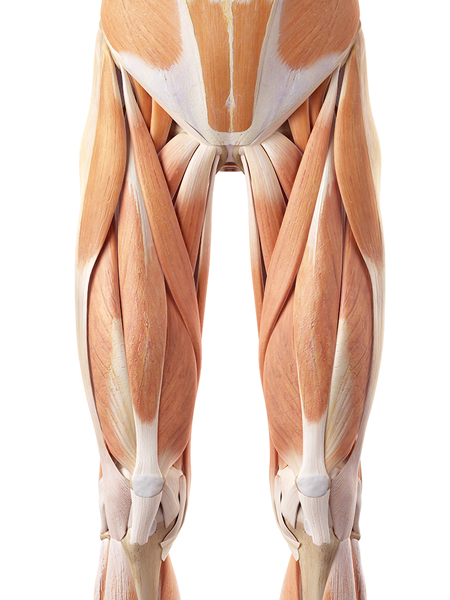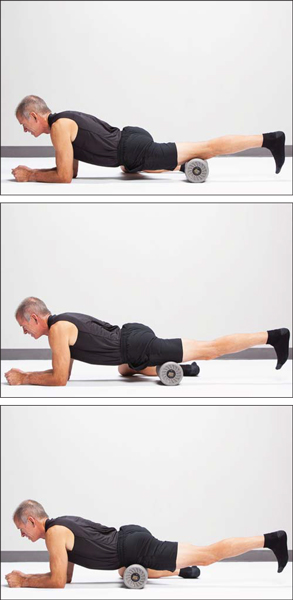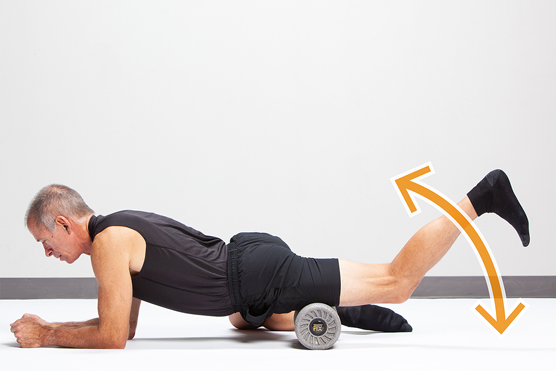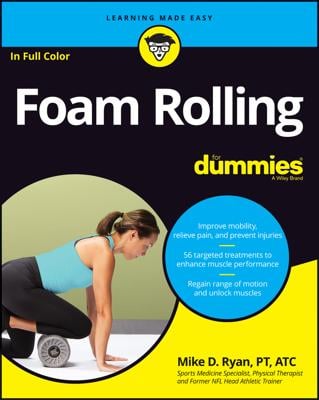 SciePro/Shutterstock
SciePro/ShutterstockThe workhorses’ stable located on the front of the thigh
Three of the quad muscles attach on the upper thigh bone. The fourth muscle, the mighty rectus femoris, is the only quad muscle that crosses the hip joint. Because it’s the longest quad muscle and, with the help of the kneecap and patella tendon, the only quad muscle to cross both the knee and hip joints, the busy rectus femoris is usually the tightest quad muscle and will therefore be the focus of your roller treatments.
If you’re pulling an expensive boat through a narrow canal, you’ll have much more control using four medium-size ropes attached to the boat compared to using only one big rope attached to your treasured yacht. Applying this analogy to your thigh, if your four quad muscles are tight and bound together, they’ll pull on your kneecap and knee joint like one big, tight muscle instead of four independent, strong, and mobile muscles.This unlocking treatment will relax the four quad muscles and a smaller, less important quad-wannabe muscle. By unlocking your quad muscles, this treatment allows all four muscles to do their specific jobs independently. These are strong muscles responsible for straightening your knee joint and lifting the leg forward at the hip joint — two important movements for walking and running.
Getting ready
Lay face down towards the top half of your padded launch pad. Place the roller just above the kneecap, perpendicular to the leg. Rest comfortably on both elbows in a plank-like position. Swing the other knee outward, placing some of your weight on the inside of your bent knee.If this starting position is uncomfortable for your knees or elbows, use pillows or towels to support your body weight.
As you prepare to unlock or relax tight muscles, now is a good time to start your slow and deep breathing pattern.
Before you start any rolling treatment or exercise, it helps to quiet your body and mind. Close your eyes. Visualize your body resting in a relaxed and pain-free place. Perform three slow, deep breaths to prepare your body to heal.
The exercise
Here’s how you can relax your quad muscles by unlocking their trigger points.1. Start by slowly rolling your leg downward, which allows the roller to glide upwards towards the hip, as shown.
Moving your elbows and bent knee downward, slowly run the roller up the front of the thigh, searching for trigger points or areas of tightness. I playfully refer to these localized muscle restrictions with my physical therapy patients as “painful grapes.” Your job is to find all the painful grapes on the front side of the thigh and crush them.
 Photography by Haim Ariav and Klara Cu
Photography by Haim Ariav and Klara CuRolling the quad muscles — starting, middle, and finishing positions
2. Continue with loud, deep breathing, slow rolling, and grape crushing up the thigh until you reach the finish line: the crease where your thigh meets your abdomen.
3. Complete one roll in an upward direction; it will take approximately one minute.
4. When you’ve finished, safely lift yourself off the roller and pat yourself on the back for a job well done.
Level 1 unlocking
Rest on each painful grape for three slow breaths, allowing the roller to melt into the muscle like a hot knife through butter. Then resume the upward roll, seeking more trigger points.If your quads are both looser and pain-free with walking after a minimum of three days of Level 1 unlocking, progress to Level 2 unlocking.
Level 2 unlocking
Rest on each painful grape for three slow breaths, allowing the roller to melt into the muscle. Next, slowly bend the knee approximately 45 degrees before slowly returning to the straight position, as shown. Perform this slow bend two times in each direction on each trigger point. Photography by Haim Ariav and Klara Cu
Photography by Haim Ariav and Klara CuLevel 2 quad treatments involve adding a slow, 45-degree knee bend, then returning to a straight knee position two times on each trigger point.
Note how much the muscle-unlocking intensity increases when knee motion is added.
Resume your seek-and-destroy mission up the front of your thigh, looking for the next painful grape.
Bending the knee too far during Level 2 quad treatments can trigger a painful hamstring spasm. Been there, done that. Those of us who carelessly bent our knees past 45 degrees while rolling our quads and then suffered the wrath of three angry hamstring muscles in full spasms only made that mistake once! I hope you learn from my painful mistake.
Do’s and don’ts
Keep the following do’s and don’ts in mind when rolling the muscles in the front of your thigh:- Do breathe slow, deep, and loud.
- Do move the roller in one direction: upward towards the hip.
- Do try other roller options, like vibrating rollers and roller balls, to determine the best options to unlock your quad muscles.
- Do use towels, pillows, or pads to keep weight-bearing body parts like your elbows happy.
- Don’t roll on your kneecap or hip bone.
- Don’t roll on an acutely strained quad muscle.
- Don’t roll on any area that produces numbness, tingling, shooting pain, or weakness.

